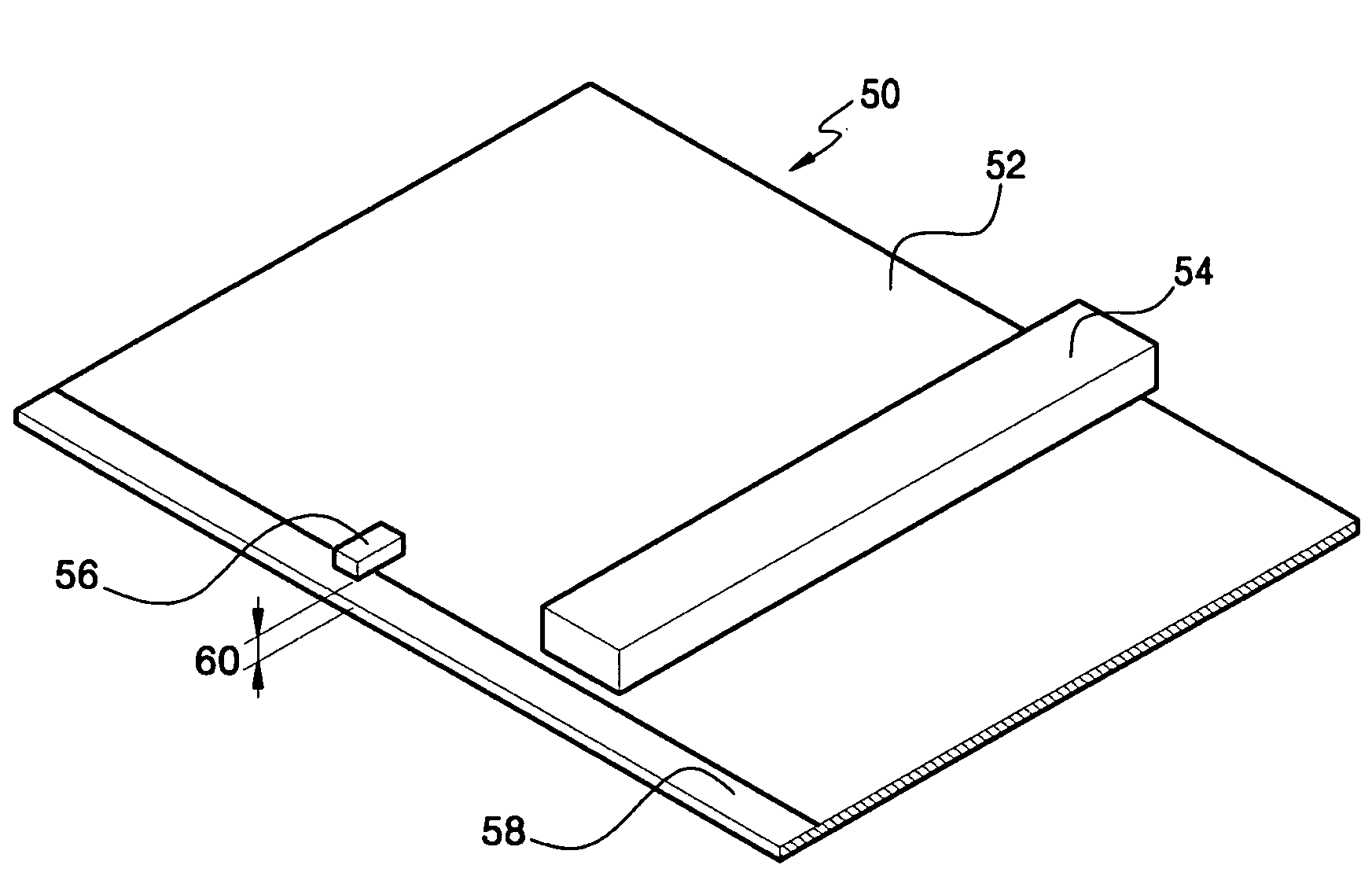Discharge methods and systems in electrophotography
a technology of electrophotography and discharge method, applied in the field of electrophotography, can solve the problems of large power supply space, large area of machine space occupied by corona devices, contamination and other problems
- Summary
- Abstract
- Description
- Claims
- Application Information
AI Technical Summary
Benefits of technology
Problems solved by technology
Method used
Image
Examples
Embodiment Construction
[0022]An important consideration to remember in the field of electrophotography is the fact that it is necessary to electrostatically clean the surface on which the latent charge image is formed in between imaging process steps. If the surface is not cleaned and evenly recharged, spurious charging, and hence spurious imaging, will remain on that surface. It is not necessarily sufficient to merely recharge the surface with the primary corona device, as the remaining charge distribution will leave a background latent image of charge, to which would be added a uniform additive amount of ionic charging. This would be insufficient quality for most commercial uses. It is therefore at least desirable to clean the static charging on the surface (bringing the charge to a uniform distribution as close to zero as possible) before the primary corona charging system adds the overall uniform charge to the photoconductor surface.
[0023]A method may be performed to provide latent charge images on a ...
PUM
| Property | Measurement | Unit |
|---|---|---|
| voltages | aaaaa | aaaaa |
| voltages | aaaaa | aaaaa |
| area | aaaaa | aaaaa |
Abstract
Description
Claims
Application Information
 Login to View More
Login to View More - R&D
- Intellectual Property
- Life Sciences
- Materials
- Tech Scout
- Unparalleled Data Quality
- Higher Quality Content
- 60% Fewer Hallucinations
Browse by: Latest US Patents, China's latest patents, Technical Efficacy Thesaurus, Application Domain, Technology Topic, Popular Technical Reports.
© 2025 PatSnap. All rights reserved.Legal|Privacy policy|Modern Slavery Act Transparency Statement|Sitemap|About US| Contact US: help@patsnap.com



